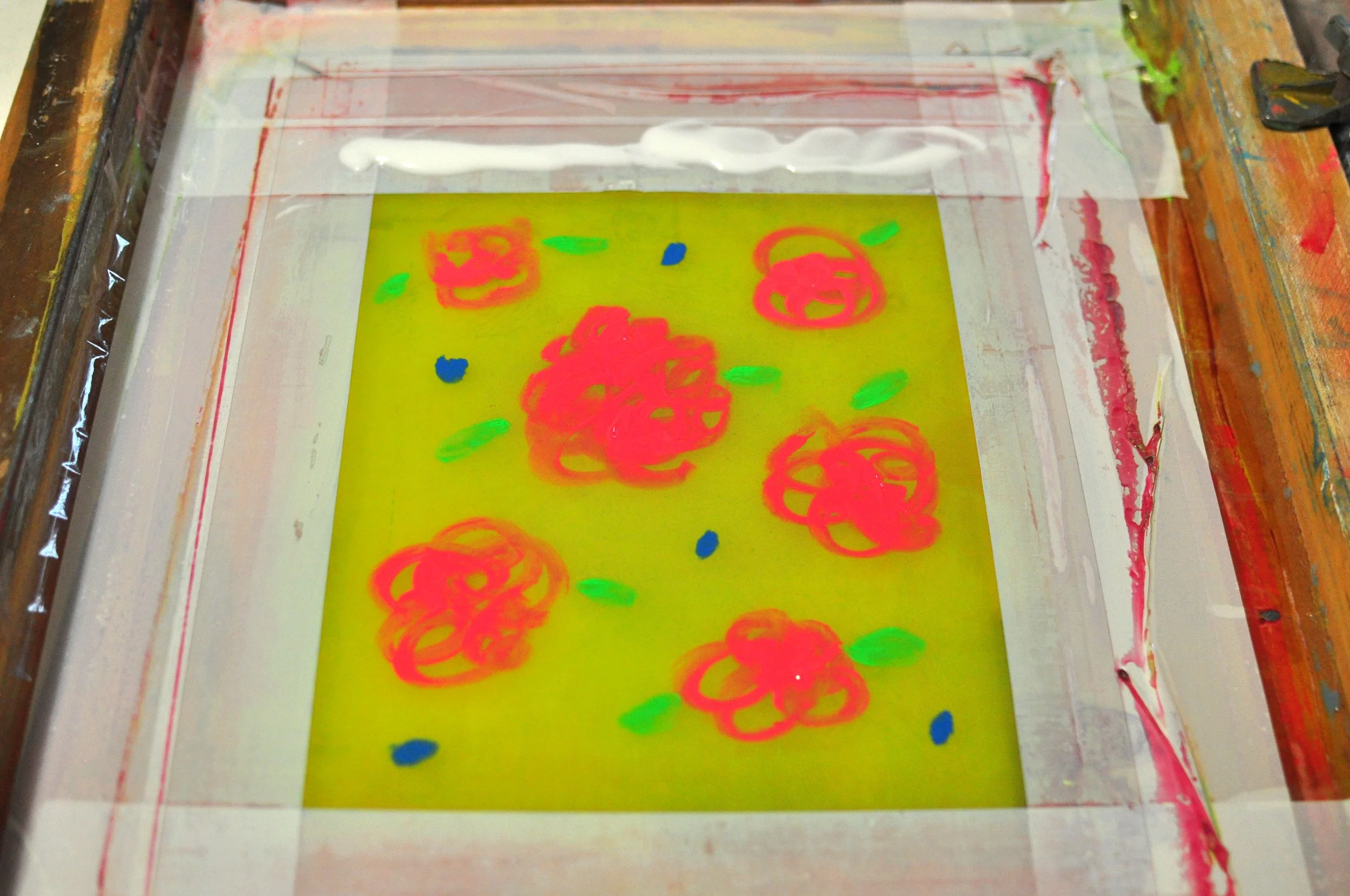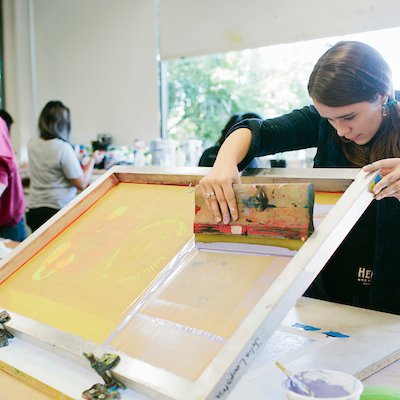The Vital Overview to Recognizing Screen Printing and Its Versatile Utilizes
Screen printing has an abundant background that goes back to old times, advancing into an innovative technique used throughout different industries today. This overview checks out the details of the screen printing procedure, outlining its applications in advertising and marketing, fashion, and home design - 10:9 Design Embroidery. Understanding these fundamentals can open imaginative possibility for both imaginative and commercial jobs. The complying with sections will reveal essential suggestions and strategies to boost one's screen printing ventures
The History of Screen Printing
Screen printing has roots that trace back centuries, its evolution reflects the technological and artistic innovations of various societies. Stemming in old China, the technique was at first made use of for enhancing textiles and later infect Japan, where it came to be integral to Ukiyo-e woodblock printing. The approach changed to Europe in the 18th century, where it acquired appeal among craftsmens and industrial printers. The invention of picture solution in the 20th century reinvented screen printing, permitting even more detailed styles and better effectiveness. Artists like Andy Warhol additionally propelled its popularity, utilizing the medium to produce renowned works that blended commercialism and fine art. By the late 20th century, screen printing had established itself as a flexible technique, used in vogue, advertising, and art. Today, it remains to progress, incorporating electronic technology and increasing its applications throughout numerous industries.
The Screen Printing Refine Explained
Screen printing changes creative visions right into concrete designs via a collection of exact steps. A photo is developed and after that moved onto a screen, normally made of fine mesh material extended over a structure. A light-sensitive emulsion is related to the screen, which is subjected to light, setting in areas not covered by the picture. After rinsing the unhardened emulsion, a stencil is formed.
Next off, the screen is positioned over the substrate, whether it be material, paper, or one more product. Ink is after that pushed through the open locations of the pattern making use of a squeegee, transferring the style onto the substrate listed below. This process can be repeated for multiple colors, needing different displays for each shade. Lastly, the published product is healed using heat to ensure the ink adheres properly, leading to a durable, dynamic layout ready for use.
Sorts Of Screen Printing Techniques

In addition, specialty techniques, such as discharge screen printing, eliminate dye from the material to create softer prints, while foil screen printing applies metallic aluminum foil to achieve a glossy finish (10:9 Design Texas). Each strategy provides distinct attributes, catering to numerous imaginative needs and production scales, inevitably increasing the possibilities within the screen printing domain
Applications of Screen Printing in Different Industries

Additionally, the signage and advertising and marketing fields make use of screen printing for producing distinctive display screens and banners. This method enables for vibrant shades and intricate designs that record attention. In electronic devices, screen printing is utilized for applying conductive inks to circuit card, necessary for component links. The home style industry embraces screen printing to generate distinct designs on fabrics and wall surface art. Generally, screen printing acts as an important tool across diverse areas, improving products with customized and aesthetically enticing graphics.
Tips for Successful Screen Printing Projects
While undertaking a screen printing job, cautious attention to information can considerably improve the last result. First, picking top quality materials is vital; this consists of the screen, inks, and substratums. Making use of suitable mesh matters can influence ink deposition and information resolution. Preparation is equally vital; detailed cleaning of displays and appropriate direct exposure times ensure crisp prints.
Next, exact registration is vital for multi-color prints. Making use of alignment devices can here help achieve exact layering. In addition, screening prints on scrap materials before production aids identify possible issues without squandering sources.

Regularly Asked Inquiries
What Materials Are Ideal for Screen Printing on Textile?
Cotton and polyester blends are suitable for screen printing on textile because of their longevity and ink absorption. Additionally, specialty textiles like silk or canvas can produce one-of-a-kind structures and finishes, improving the general style top quality.
Just how Do I Clean and Maintain Screen Printing Devices?
To preserve and clean screen printing equipment, one need to routinely clean screens with suitable solvents, evaluate mops for wear, oil moving components, and store all products in a completely dry, dust-free atmosphere to prolong their lifespan.
What Are the Ecological Effects of Screen Printing?
Screen printing can have substantial environmental impacts, including chemical waste from solvents and inks, water usage during cleansing processes, and power intake. Lasting methods and environment-friendly products are vital for reducing these unfavorable effects.
Can Screen Printing Be Done in the house Properly?
Screen printing can be effectively done at home with the right products and strategies. Hobbyists can produce quality prints, though success depends upon their ability level, devices, and understanding of the process included.
What Are the Prices Connected With Beginning a Display Printing Organization?

Beginning a screen printing organization entails expenses for devices, materials, and work area. Initial expenditures typically range from a couple of hundred to several thousand dollars, relying on the range, quality of machinery, and wanted production capability.
Screen printing has a rich history that dates back to ancient times, developing right into an advanced method utilized across numerous markets today. Another strategy, rotary screen printing, utilizes cylindrical displays, helping with continuous printing on fabric rolls, consequently boosting performance for massive productions. Furthermore, specialty strategies, such as discharge screen printing, eliminate dye from the fabric to create softer prints, while foil screen printing uses metallic aluminum foil to accomplish a glossy finish. In the style market, screen printing is widely used to develop dynamic layouts on apparel, enabling brand names to showcase their unique designs. Cotton and polyester blends are suitable for screen printing on fabric due to their durability and ink absorption.